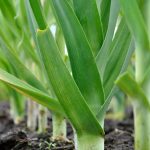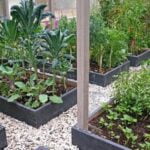Indoor gardening has become increasingly popular, allowing people to grow their favorite vegetables and plants in the comfort of their own homes. One common question that arises is, “Do indoor gardens need grow lights for vegetables?” Understanding the role of light in plant growth is crucial when it comes to successful indoor gardening. In this article, we will explore the various factors to consider when growing vegetables indoors and the benefits of using grow lights for these plants.
When it comes to indoor gardening, light plays a key role in the growth and development of plants. Understanding the different types of grow lights and their suitability for vegetable plants is important for providing an optimal growing environment. Proper placement of grow lights within an indoor gardening setup can also significantly impact the success of growing vegetables indoors.
In addition to exploring the importance of grow lights for successful indoor vegetable gardening, we will discuss common mistakes to avoid when using these lights and provide valuable tips for maximizing their effectiveness. Whether you’re a beginner or experienced indoor gardener, understanding the role of grow lights is essential for achieving healthy and thriving vegetable plants indoors.
Understanding the Role of Light in Plant Growth
Photosynthesis and Light
Light plays a crucial role in the process of photosynthesis, which is essential for plant growth. During photosynthesis, plants use light to convert carbon dioxide and water into glucose and oxygen. This means that adequate light is necessary for vegetable plants to produce energy and grow properly.
Light Intensity and Duration
The intensity and duration of light also impact plant growth. Different vegetable plants have varying light requirements, but in general, most vegetables need at least 6-8 hours of direct or indirect sunlight each day. When growing vegetables indoors, it is important to replicate these light conditions as closely as possible to ensure healthy growth.
Light Spectrum
In addition to intensity and duration, the spectrum of light is also important for plant growth. Different wavelengths of light affect different aspects of plant development, so using a full spectrum grow light can ensure that vegetable plants receive the complete range of light they need for optimal growth.
Understanding how all these factors interplay in the context of indoor gardening will help ensure that vegetable plants receive the right amount and type of light they need to thrive. By providing suitable lighting conditions, indoor gardeners can achieve successful vegetable cultivation regardless of their location or climate.
Factors to Consider When Growing Vegetables Indoors
When considering growing vegetables indoors, there are several factors that need to be taken into account to ensure successful plant growth. One of the most important factors is the amount and type of light that the plants will receive. Different vegetables have different light requirements, so it’s crucial to understand the specific needs of the plants you want to grow. For example, leafy greens like lettuce and spinach require less light compared to fruiting vegetables like tomatoes and peppers.
Another factor to consider is the available space for your indoor garden. This will determine the number and size of vegetable plants you can grow. It’s important to choose a suitable location that has access to natural light or where grow lights can be set up effectively.
The type of containers or pots used for indoor gardening also plays a significant role in plant growth. Proper drainage is essential, as well as choosing containers that are large enough for the roots to develop fully. Additionally, using high-quality potting soil and providing adequate ventilation in the indoor gardening area are essential factors to consider when growing vegetables indoors.
| Factors | Considerations |
|---|---|
| Light Requirements | Different vegetables require different amounts of light |
| Space Availability | Determines number and size of vegetable plants for indoor garden |
| Container Type | Proper drainage, size, and quality potting soil are essential factors |
Benefits of Using Grow Lights for Indoor Vegetable Gardens
When growing vegetables indoors, providing the right amount and type of light is crucial for the success of your indoor garden. While natural sunlight is the best source of light for plant growth, it may not always be sufficient when gardening indoors. This is where grow lights come in handy. These artificial light sources are designed to mimic the spectrum of natural sunlight, providing plants with the necessary light energy for photosynthesis.
One of the key benefits of using grow lights for indoor vegetable gardens is the ability to control the amount and duration of light exposure. Unlike natural sunlight, which varies in intensity and duration throughout the day and across seasons, grow lights can provide a consistent light source tailored to the specific needs of your vegetable plants. This ensures that your plants receive adequate light regardless of any external factors such as weather or location.
In addition, grow lights allow indoor gardeners to extend the growing season for vegetables beyond traditional outdoor planting periods. With proper use of grow lights, you can create an optimal environment for your vegetable plants to thrive year-round, resulting in a continuous harvest of fresh produce regardless of outdoor conditions. This flexibility is especially beneficial for gardeners in regions with short growing seasons or limited access to outdoor space.
| Benefit | Description |
|---|---|
| Controlled Light Exposure | Grow lights enable indoor gardeners to regulate the amount and duration of light exposure for their vegetable plants. |
| Extended Growing Season | With grow lights, indoor gardeners can prolong the growing season for vegetables, allowing for a continuous harvest year-round. |
Types of Grow Lights Suitable for Vegetable Plants
When it comes to indoor gardening, the type of grow lights used can make a significant difference in the success of growing vegetables. There are a few different types of grow lights that are suitable for vegetable plants, each with its own advantages and disadvantages. Here are some of the most common types:
- Fluorescent Grow Lights: These are an affordable option and produce a good amount of light for the cost. They are great for growing leafy vegetables and herbs.
- LED Grow Lights: LED lights are energy-efficient and produce very little heat, which can be beneficial for indoor gardening. They are suitable for a wide range of vegetables and provide a full spectrum of light for optimal growth.
- High-Intensity Discharge (HID) Grow Lights: These lights produce a lot of light and are great for fruiting and flowering plants. They have different types, including metal halide (MH) and high-pressure sodium (HPS) lights.
Each type of grow light has its own specific benefits, so it’s important to consider the needs of your vegetable plants before choosing the right one for your indoor garden setup. Additionally, it’s essential to understand how to properly place these grow lights to maximize their effectiveness in promoting healthy plant growth.
Proper placement of grow lights is crucial when it comes to indoor gardening. Placing them too close can lead to burning the plants, while placing them too far will not provide enough light for proper growth.
Understanding the specific light requirements of each type of vegetable plant is key to ensuring they receive the right amount and intensity of light for healthy development. With this knowledge, along with the right type of grow lights, you can set yourself up for successful indoor vegetable gardening all year round.
Proper Placement of Grow Lights in Indoor Gardening Setups
When setting up an indoor garden, the proper placement of grow lights is crucial for the successful growth of vegetable plants. Here are some important factors to consider when determining the placement of grow lights:
1. Distance from plants: It is essential to position the grow lights at an appropriate distance from the vegetable plants to ensure they receive the right amount of light. Different types of plants may require different distances, so it’s important to research the specific needs of the vegetables you are growing.
2. Light angle: The angle at which the grow lights are placed can impact how effectively the plants receive light. For optimal results, consider using adjustable hanging systems to position the lights at the correct angle for maximum coverage.
3. Lighting duration: In addition to considering the placement of grow lights, it is important to establish a consistent lighting schedule for your indoor vegetable garden. Most vegetable plants require around 10-14 hours of light per day, so be sure to set timers or adjust the lighting schedule accordingly.
By carefully considering these factors and properly placing your grow lights in your indoor gardening setup, you can provide your vegetable plants with the necessary light for healthy growth and abundant harvests.
Tips for Maximizing the Effectiveness of Grow Lights for Vegetables
When it comes to maximizing the effectiveness of grow lights for vegetables in indoor gardens, there are several tips and best practices to keep in mind.
Choose the Right Type of Grow Light
Not all grow lights are created equal, and different types of vegetable plants may require different types of light. For leafy greens and herbs, fluorescent or LED grow lights are suitable, while fruiting vegetables like tomatoes and peppers may benefit from high-intensity discharge (HID) lights. It’s important to research the specific light requirements of the vegetables you are growing and choose the appropriate grow lights accordingly.
Ensure Proper Placement
Proper placement of grow lights is crucial for ensuring that all parts of your vegetable plants receive adequate light. As a general rule, hang the grow lights 12-36 inches above the plants, adjusting as needed as the plants grow. Consider using adjustable hanging systems to easily modify the height of the lights. Additionally, make sure that each plant has uniform access to light by positioning the lights at angles or using multiple light sources.
Monitor Light Duration and Intensity
Vegetable plants require different amounts of light depending on their growth stage. Generally, seedlings may need around 14-16 hours of light per day, while mature plants may require 8-12 hours. It’s essential to monitor the duration and intensity of light exposure to prevent overexposure or underexposure. Investing in a timer system can help automate this process and ensure consistent light cycles for your indoor vegetable garden.
By following these tips for maximizing the effectiveness of grow lights for vegetables, indoor gardeners can ensure healthy plant growth and bountiful harvests all year round.
Common Mistakes to Avoid When Using Grow Lights for Indoor Vegetable Gardens
When using grow lights for indoor vegetable gardens, there are several common mistakes that gardeners should avoid in order to ensure successful plant growth. One common mistake is not providing the right type of grow light for the specific needs of the vegetables being grown. Different plants require different types of light, so it’s important to research which type of grow light is best suited for the particular vegetables in your indoor garden.
Another mistake to avoid is placing the grow lights too far away or too close to the plants. If the lights are too far, the plants may not receive enough light and could become leggy or fail to produce fruit. On the other hand, if the lights are too close, they could burn the plants or cause them to dry out. Proper placement of grow lights is crucial for healthy plant growth.
Additionally, some gardeners make the mistake of not providing a consistent lighting schedule for their indoor vegetable gardens. Vegetables require a certain number of hours of light each day in order to thrive, so it’s important to set a timer and ensure that they receive the proper amount of light consistently.
Inconsistent lighting schedules can lead to stunted growth or poor fruit production. By avoiding these common mistakes, gardeners can maximize the effectiveness of grow lights and achieve successful indoor vegetable gardening.
Conclusion
In conclusion, it is clear that grow lights play a crucial role in the success of indoor vegetable gardening. The understanding of the importance of light in plant growth and the factors to consider when growing vegetables indoors all highlight the significance of using grow lights. By providing the right type and proper placement of grow lights, indoor gardeners can maximize the effectiveness of these artificial light sources, leading to healthy and thriving vegetable plants.
The benefits of using grow lights for indoor vegetable gardens are numerous, including the ability to provide consistent and adequate light regardless of outdoor conditions, improved growth and yield, as well as the opportunity to extend the growing season. Additionally, by being aware of common mistakes to avoid when using grow lights, indoor gardeners can ensure that their vegetable plants receive optimal lighting without causing harm or stress to them.
Overall, while it is possible to grow vegetables indoors without using grow lights, their importance should not be overlooked. The use of appropriate grow lights tailored to the specific needs of vegetable plants can make a significant difference in the overall success and productivity of an indoor garden.
As technology continues to advance in this area, there are now more options than ever for indoor gardeners to choose from when it comes to selecting the best grow lights for their particular setup.
Frequently Asked Questions
What Kind of Light Is Needed to Grow Vegetables Indoors?
The kind of light needed to grow vegetables indoors is typically full-spectrum LED grow lights, as they can mimic the natural sunlight that plants need for photosynthesis. These lights provide the necessary intensity and spectrum of light that vegetables require to grow and develop properly.
Can You Grow Plants Indoors Without Grow Lights?
It is possible to grow some plants indoors without specifically using grow lights, especially if you have a well-lit room or access to natural sunlight. However, for most vegetables that require adequate light for photosynthesis, it may be challenging to achieve the necessary light levels without additional lighting support.
Factors such as the location of the room and seasonal changes can also affect the available natural light for indoor plants.
What Vegetables Do Not Need Light to Grow?
Some vegetables that do not need light to grow are root vegetables such as potatoes, carrots, radishes, and beets. These types of vegetables primarily rely on the nutrients in the soil for growth rather than requiring direct light exposure.
While some limited amount of light might still benefit these plants, they are generally considered more tolerant of low-light conditions compared to other types of vegetables.

If you’re looking to get into vegetable gardening, or are just looking for some tips on how to make your current garden better, then you’ve come to the right place! My name is Ethel and I have been gardening for years. In this blog, I’m going to share with you some of my best tips on how to create a successful vegetable garden.





